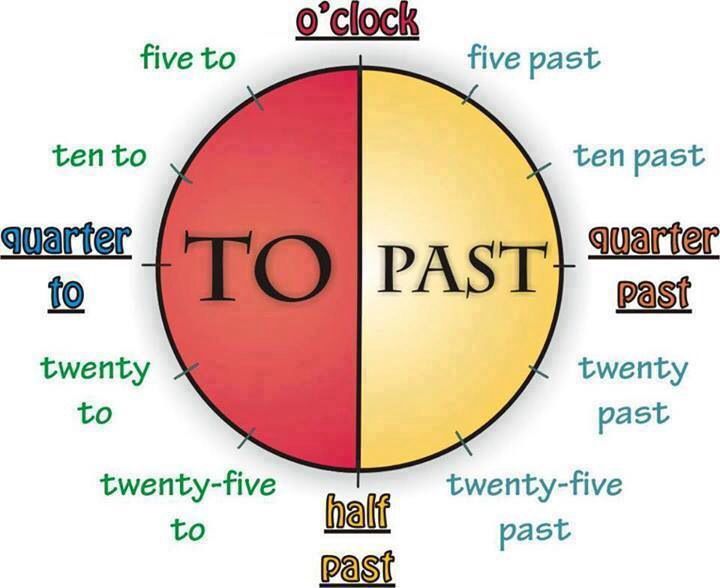- telling the time
- 24 hour clock
- Midnight Midday
- time difference
Telling the time
There are two methods: (a) direct and (b) annoying
A: DIRECT
AA:BB
You can always read the time directly: “AA” + “BB”
10:10 = ten ten
10:17 = ten seventeen
10:45 = ten forty five
10:55 = ten fifty five
BUT 10:01
x: ten one
o: ten oh one
xx:0x = xx: “oh” x
10:09 = ten oh nine
or we use the second method:
B: annoying
or you can use past and to
AA:BB
“BB past AA” or “BB to AA+1”
10:26
“It’s twenty six past ten”
10:40
“It’s twenty to eleven”
Also, we usually say:
- five past
- ten past
- quarter past
- half past
- twenty to
- quarter to
- ten to
- five to
24 hour clock
The UK does not use the 24 hour clock but Europe does.
To differentiate between morning and evening, we use AM and PM.
02:00 = 2am
14:00 = 2pm
o’clock means there are no minutes and no precision of evening or morning
o: See you at 2 o’clock
x: See you at 2 o’clock pm
x: See you at 2 o’clock 30
If the context is clear we just say the number of the hour
See you at 2
We often stress that it’s not appropriate or we should be sleeping by emphasising “in the morning”
Why are you calling me now? It’s two in the morning!
Midday Midnight
00:00 = midnight
12:00 = midday
Some people say quarter to midnight, or half past midday, which is correct but not common
00:20
x: midnight 20
o: twenty past midnight
o: twelve twenty
Time difference
The day starts in the east. The sun rises in the east and sets in the west. When the day is ending in the east, it is only starting in the west.
They are fourteen hours ahead
Tokyo is fourteen hours ahead of New York
14:00 in Tokyo = 00:00 in New York
Paris is one hour ahead of London
Midnight in Paris is 11pm in London
Tokyo is nine hours ahead of London
They are one hour behind
London is one hour behind Paris
credits: image from TES, all other content © Alan François 2019

